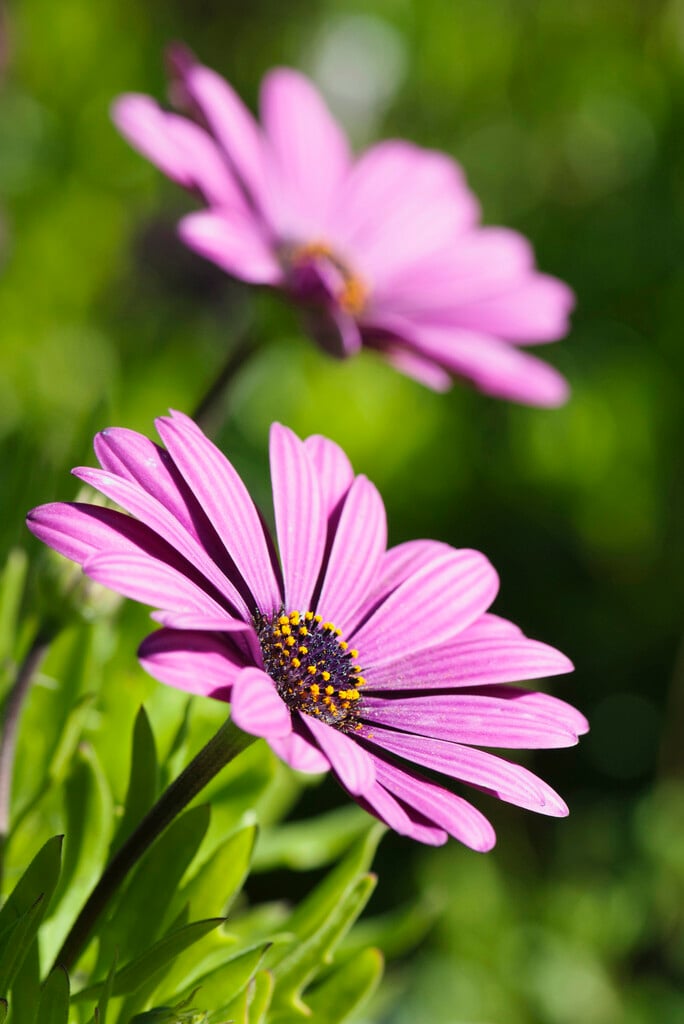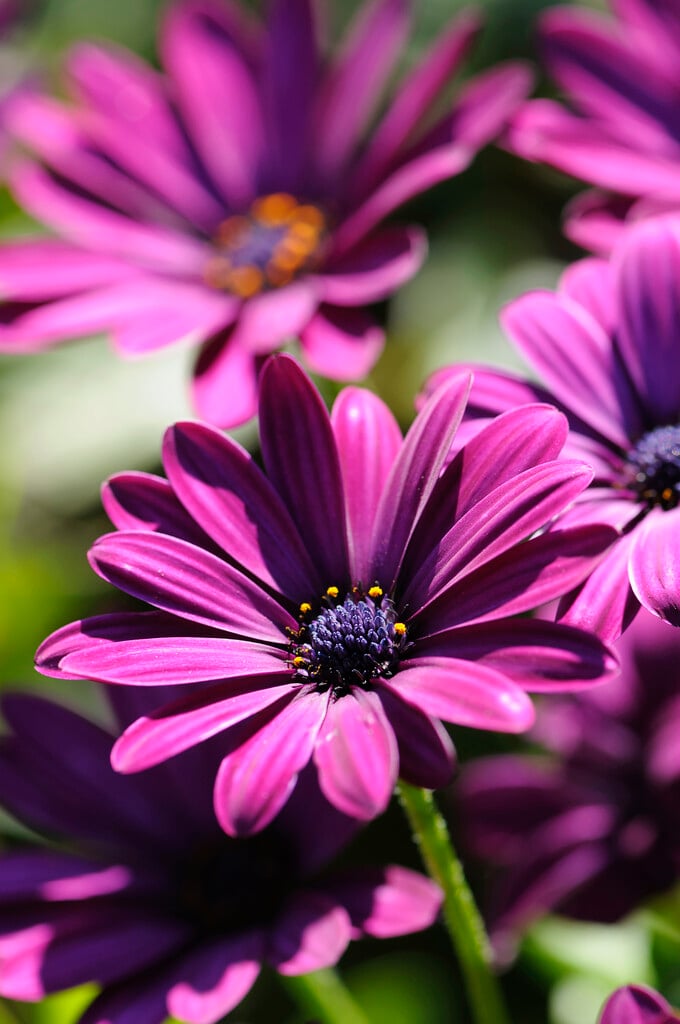Osteospermum jucundum
delightful African daisy
A rhizomatous perennial to 45cm in height, with narrow, aromatic grey-green leaves and solitary daisy-like, light pinkish-purple, dark-eyed flowers 5-6cm in width
Synonyms
Dimorphotheca barberae misappliedOsteospermum jucundum
see moreOsteospermum barberae misapplied
Size
Ultimate height
0.1–0.5 metresTime to ultimate height
2–5 yearsUltimate spread
0.5–1 metresGrowing conditions
Moisture
Well–drainedpH
Acid, Alkaline, NeutralColour & scent
| Stem | Flower | Foliage | Fruit | |
| Spring | Green Grey Silver | |||
|---|---|---|---|---|
| Summer | Purple | Green Grey Silver | ||
| Autumn | Purple | Green Grey Silver | ||
| Winter |
Position
- Full sun
Aspect
South–facing
Exposure
Exposed or ShelteredDrought resistance
Yes Hardiness
H3Botanical details
- Family
- Asteraceae
- Native to GB / Ireland
- No
- Foliage
- Deciduous
- Habit
- Spreading branched
- Potentially harmful
- Pets (rabbits, rodents): Harmful if eaten. For further information and contact numbers regarding pets, see the HTA guide to potentially harmful plants
- Genus
Dimorhotheca can be annuals or woody-based, evergreen perennials with simple, alternate leaves and large daisy-like flower-heads in summer and autumn
- Name status
Correct
- Plant range
- Southern Africa
How to grow
Cultivation
Grow in light, moderately fertile, well-drained soil in a warm, sunny position. In frosty areas overwinter cuttings under glass
Propagation
Propagate by softwood cuttings in late spring or semi-hardwood cuttings in late summer
Suggested planting locations and garden types
- Coastal
- Patio and container plants
- Flower borders and beds
Pruning
Cut back to remove winter damage and maintain appearance in spring.
Pests
May be susceptible to aphids
Diseases
May be susceptible to verticillium wilt
Get involved
The Royal Horticultural Society is the UK’s leading gardening charity. We aim to enrich everyone’s life through plants, and make the UK a greener and more beautiful place.

